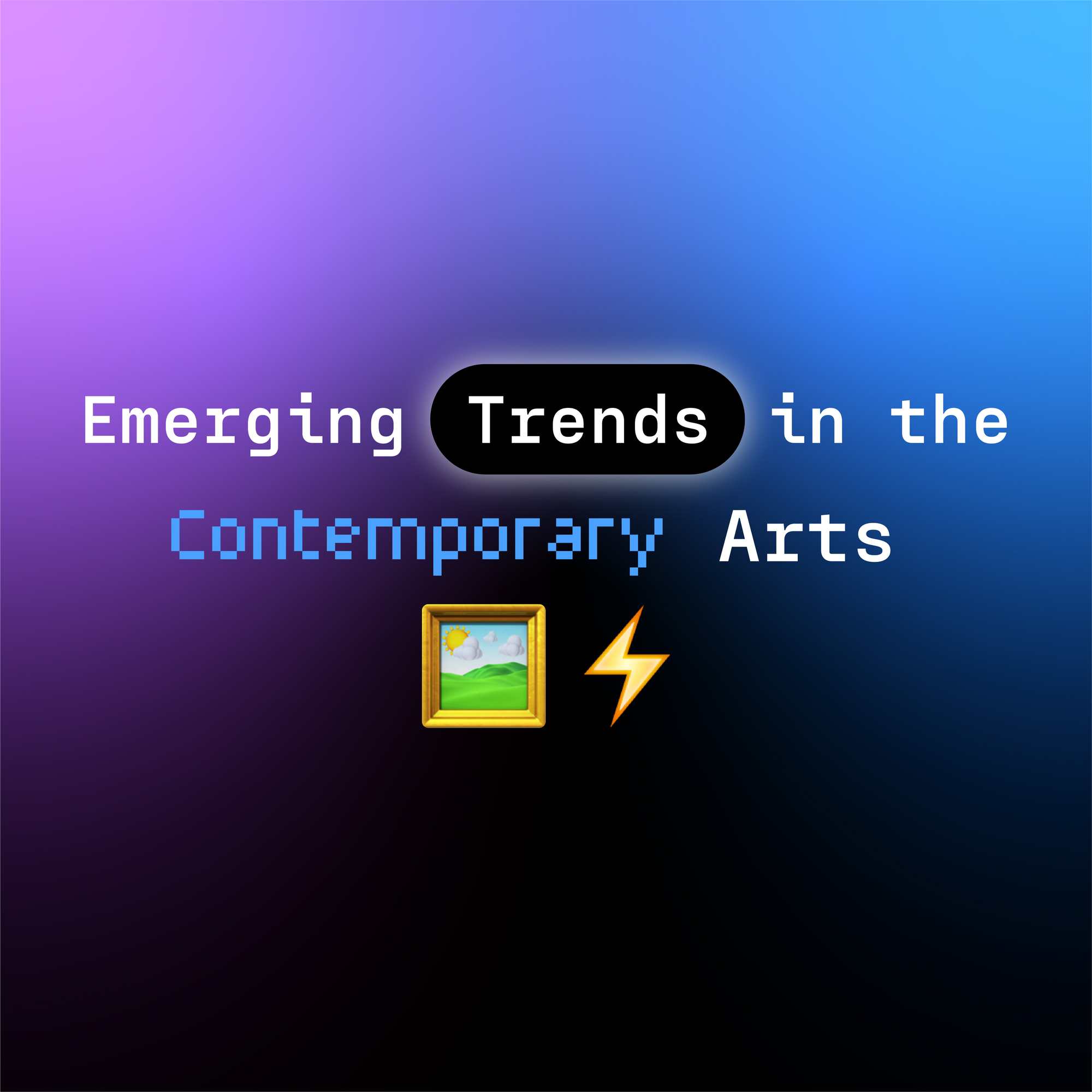Top Emerging Trends in the Contemporary Art Scene
By Terrain.art | Sep 24 2021 · 4 min read
Virtual tours and installations, online purchases and NFT artworks – trends that became popular during Covid-19 may well outlive the pandemic.
While it is true that change is the only constant, there are times when this is swift and unexpected. The Covid-19 pandemic was one moment when the world we knew changed, possibly, for good. Touched by the pandemic, the contemporary art world also evolved to adjust to the changing realities of our times. Virtual gallery tours, online sale of artworks, NFT transactions, virtual installations have now become an intrinsic part of the contemporary art scene. Many of these new developments, which were brought about because of the pandemic, may outlive the crisis. Here, we look at the emerging trends in the contemporary art scene and understand why contemporary art is welcoming such changes.
Virtual Tours: Virtual reality and augmented reality are no longer restricted to video games. Museums and art galleries across the world are embracing this visionary technology (no pun intended!) to give people a tour of their exhibits. When the world went into lockdown in 2020, museums and galleries quickly turned to online platforms to offer their patrons an experience of their exhibits.
Although many galleries and museums have opened their doors to both permanent and special exhibitions in recent months, they also continue to serve their clients virtually. The Guggenheim Museum, which showcases iconic postmodern, conceptual and installation art as examples of key moments of contemporary art, is offering Google Street View Tour of the museum that enables visitors to virtually wander through the corridors of the Lloyd Wright’s superbly designed building without having to leave the couch. The Barnes Foundation in Philadelphia, which boasts works by Renoir, Cézanne, and Matisse, has a full-fledged online collection, allowing views to filter through the works by colour, lines, light and space. The Uffizi Gallery, which is a veritable treasure trove of high-Renaissance art, has its digital archives, which offer viewers to admire the works of Botticelli, Titian, and Canaletto, through the HyperVisions tab.
Online Market: Although the online art market has existed for some time now, sale figures skyrocketed only after the world under lockdown. Per reports by prominent auction houses, like Christie’s and Sotheby’s, online sales have shown a year-on-year increase with new bidders across the globe joining in. Although online sales continue to be a small fraction (9%) of the whopping USD 64 billion global sales in the contemporary art scene, things are fast changing. Clare McAndrew, art market pundit and the main brain behind the UBS Global Art Market Report, said in an interview, “This [global pandemic] is the stimulus the art market needed to move online.”
NFTs and digital art: The shift to the online space has also necessitated a change in the vision of artists. The reason why contemporary art is fuelling a growth of digital artworks is not hard to understand.
Art that is meant for galleries and museums does not always look good in the pixelated space of the online world. The shift to digital art has, therefore, been swift. Digital art today is a legit billion-dollar business, which is attracting everyone from the likes of Paris Hilton to small-time artists, to create NFT-based digital art works. NFTs or non-fungible tokens are digital tokens that, when attached with an artwork, give it authenticity and helps in tracking online transactions. But this is more than just a new-fangled tech innovation. The NFT mania seems to have transformed the unlikeliest candidates into artists. Paris Hilton, the American socialite, recently collaborated with artist Blake Kathryn to create a digital work of her chihuahua Tinkerbell. The result is a rather ghastly portrait of Tinkerbell sitting on what appears to be a Doric column. If that weren’t enough, she also sold another digital portrait — this time, showing her as a CGI Barbie floating in the clouds. The latter sold for a neat sum of USD 1 million.
But it is not as if all artists are sacrificing their artistic vision at the altar of the get-rich-soon NFT marketplace. Many online marketplaces in the contemporary art scene are offering digital artworks of talented emerging artists as NFTs. Terrain.art, for instance, is offering a range of NFT artworks of South Asian artists that you can browse and buy from the comfort of your own home.
Embracing the tech: New market forces have also necessitated a sea-change in how art is created. Artists are now not only embracing digital art but also emerging technologies such as AI and robotics to create exciting artworks. But the direct impact of the pandemic has been on 3D motion graphics art. With the increasing importance of virtual and augmented reality, new and improved software has now made possible the creation of 3D motion graphics art. So long relegated to utilitarian projects such as buildings and interior design, more and more artists are using 3D motion graphics to reimagine their art. Partially inspired by the empty streets during the lockdown, artists are imagining cityscapes through huge, otherworldly, animated images and installations. For example, Vadim Soloviov’s imaginative and often funny digital renderings of St. Petersburg use the cityscape as being under attack by giant creatures, including monstrous crows, flying turtles, and humongous armadillos. Motion designer Shane F fills the corners of New York with playful 3D objects, such as huge snow globes and balloons.

